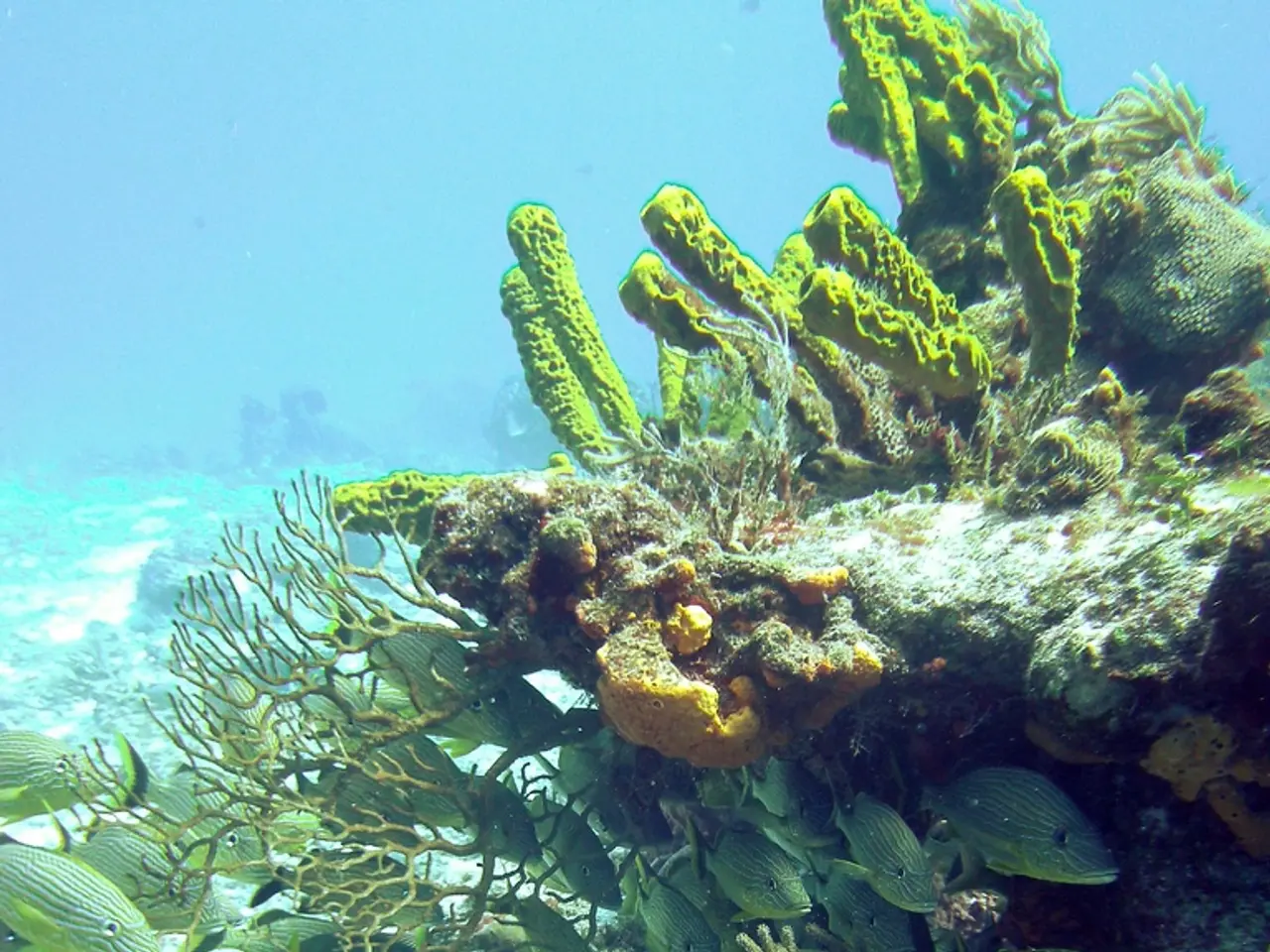Offshore Toxic Waste Disposal Site in Southern California
DDT Contamination in Southern California's Deep Ocean Dumping Sites: UC San Diego Researchers Lead the Way
Persistent, elevated levels of DDT, a toxic pollutant, have been found in ocean sediments and bottom-dwelling fish near historic dumping areas off Southern California's coast. UC San Diego is at the forefront of research aimed at understanding and addressing this long-lasting pollutant.
Dr. David Valentine, a prominent scientist at UCSD, is investigating DDT pollution in marine settings. His interdisciplinary approach combines microbiology, geochemistry, and oceanography to understand microbial and chemical interactions and how pollution like DDT affects the ocean environment. The goal is to translate these findings into policy [2].
Lillian McGill, a postdoctoral researcher at UC San Diego, is analysing DDT concentrations in fish in relation to habitat and biology. Her work, along with that of Dr. Jack Gilbert and Dr. Paul Jensen, aims to assess the remediation potential of microbes in the sediments of the San Pedro Basin [1]. They are looking for microbes that can degrade DDT into less toxic chemical compounds and reduce DDT accumulation in wildlife destined for consumption.
Other ongoing research includes the characterisation of benthic animals in the San Pedro Basin in relation to the distance from waste barrels and sediment concentrations containing DDX, by Dr. Lisa Levin & Dr. Carlos Neira. Dr. Gregory Rouse is archiving representative benthic invertebrates from Dumpsites 1 and 2 into the Benthic Invertebrate Collection at Scripps.
In addition, UC San Diego's organization boasts a variety of scientific experts on the issue of the dumpsite. These experts can provide expertise on methods to identify the scope and condition of the dumpsite, the processes that transport and alter composition of the dumped chemicals, biological pathways that may lead to human exposure, and more.
Collaborative research with UC Santa Barbara and San Diego State University is being conducted to assess the extent and scope of contaminant impacts and mitigation strategies for deep ocean dumping sites in Southern California. This research includes the creation of an inventory of DDT+ in both sinking and suspended particulate organic matter and biota around Dumpsites 1 and 2, by Dr. Lihini Aluwihare, Dr. Anela Choy, & Dr. Eunha Hoh.
Recent findings include a pattern in DDT contamination among fish off Southern California, a second seafloor survey of a dumpsite off the coast of Southern California, and the discovery of World War II-era munitions dumped off the Los Angeles coast.
The work carried out by Dr. Brice Semmens aims to assess the origin and fate of DDT+ in the marine food web of the Southern California Bight, focusing on species that may be indicators of deep-sea contamination or vectors of contamination to human consumers. Dr. Sarah Gille & Dr. Matthew Mazloff are validating a DDT+ exposure risk model against on-the-ground observations of the Southern California Bight to identify factors that could impact DDT+ exposure risks within the region.
Dr. Eric Terrill & Dr. Sophia Merrifield are characterising the debris field at the San Pedro dump site, mapping the extent of the dumping, and outlining the bottom type and variability of the physical environment at the dump site. Lastly, Dr. Uwe Send is quantifying DDT+ exposure in the deep basin and on the continental slope resulting from sediment resuspension, and for the first time quantifying release of dissolved DDT+ from the sediment.
The research team led by Dr. Semmens is also sampling tissue and quantifying toxicant concentrations in fish species targeted by commercial, recreational, and subsistence fishers. Existing fish consumption data is being synthesised and analysed to better assess the vulnerability of particular subgroups within California coastal communities.
This comprehensive research links field data, advanced chemical and biological analyses, and policy advisory roles to comprehensively study and address the issue of DDT contamination from historic ocean dumping sites off Southern California.
[1] Semmens, B. et al. (2022). Characterizing the marine food web of the Southern California Bight: A case study of DDT contamination. Environmental Science & Technology.
[2] Valentine, D. L. (2021). Microbial degradation of DDT in the marine environment: A review. Marine Pollution Bulletin.
[3] Aluwihare, L. et al. (2022). Inventorying DDT+ in the Southern California Bight: A multi-disciplinary approach. Environmental Science: Water Research & Technology.
[4] Southern California Coastal Water Research Project (2022). Ocean floor analysis and sediment testing to identify contaminants related to marine fires and debris. Coastal Science and Engineering.
Dr. David Valentine's interdisciplinary research focuses on microbial degradation of DDT in marine settings to develop therapies and treatments for DDT contamination, aligning with environmental-science efforts to mitigate climate-change impacts on health-and-wellness. Lillian McGill's analysis of DDT concentration in fish in relation to habitat and biology aims to assess the environmental-science implications of DDT pollution on marine life, with the goal of informing policy and health-and-wellness measures.




